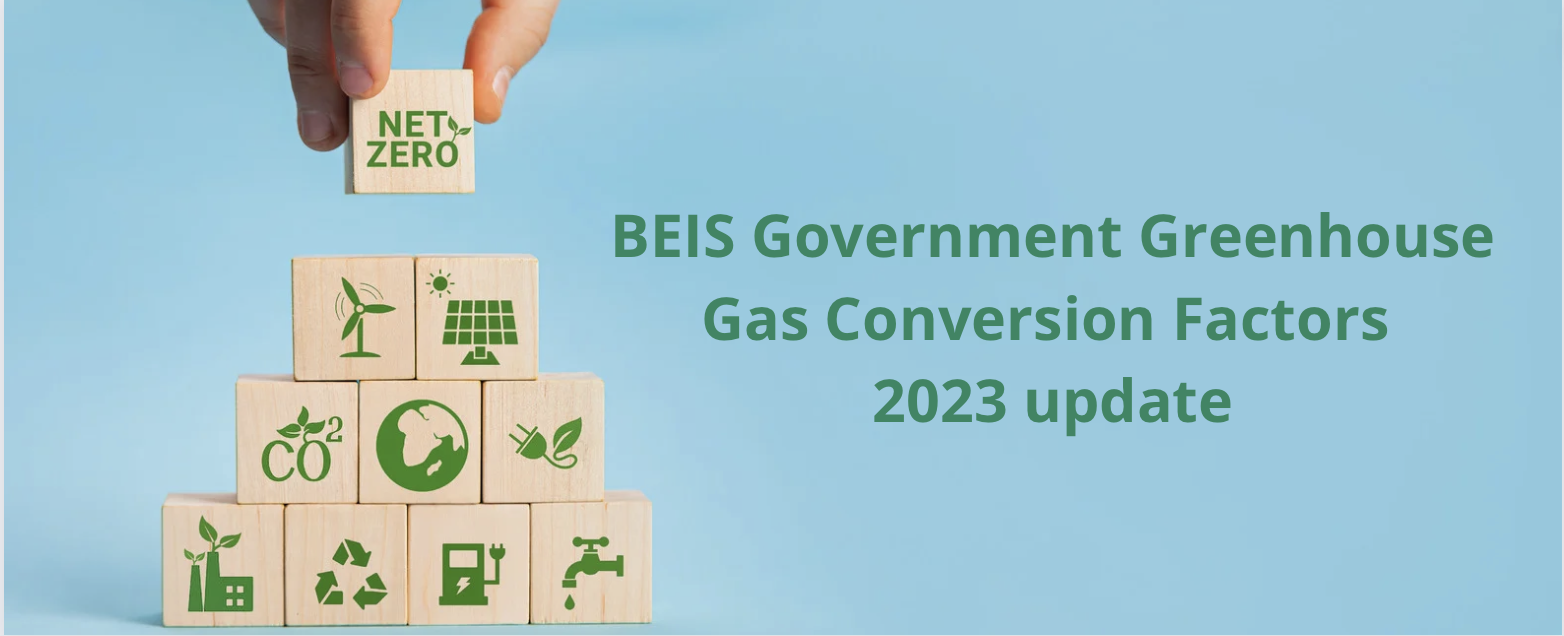
BEIS conversion factors 2023 update: what does this mean for the NHS carbon footprint?
In 2020, Greener NHS launched an ambition ‘to deliver the world’s first net zero health service’, setting two targets to help meet this vision. The first target focuses on the NHS’s direct emissions (NHS carbon footprint), which makes up around 24% of the NHS carbon footprint and includes emissions from building energy, fuels for NHS fleet and leased vehicles, waste, water, and business travel. All NHS organisations must commit to achieving this target.
‘NHS Carbon Footprint (emissions the NHS has direct control over): To reach net zero by 2040, with an ambition to reach an 80% reduction by 2028 to 2032.’ - Delivering a net zero NHS, NHS England
As a way of monitoring progress many Trusts, ICBs and primary care teams are measuring and reporting on their direct emissions annually, using the BEIS Government Greenhouse Gas Conversion Factors for Company Reporting database.
This database is updated yearly to reflect national changes in decarbonisation, with the most recent version published June 2023. But what does the most recent update mean for NHS organisations, and will there be any impact on their carbon footprint?
Electricity
The electricity generation (scope 2) conversion factor has increased by 7% due to an increase in natural gas use in electricity generation and a decrease in renewable generation compared to the previous year. This is a step in the wrong direction and the NHS can’t risk waiting for the grid to decarbonise to meet its net zero target. NHS organisations should focus on increasing onsite renewable electricity generation and improving energy efficiency to reduce consumption.
Waste Disposal
There is a slight increase in landfill disposal emissions factors for biodegradable materials due to updated values for methane captured.
It’s worth noting that the waste disposal factors cannot be used to compare different waste management options within healthcare as they don’t provide the emission for the whole lifecycle of the waste management options. Landfill factors include collection, transportation to a landfill site and landfill emissions. Combustion and recycling factors include transport to an energy recovery or material reclamation facility. In line with GHG Protocol Guidance, emissions associated with energy recovery and recycling are attributed to the user of recycled materials, not the producer of waste.
Homeworking
Homeworking carbon factors, for both office equipment and heating, have been included in the database since 2022. Although there are no significant changes to these factors compared to the previous year, an increase in flexible working post-covid displaces where emissions are created. Although NHS employees working from home might reduce an NHS organisations energy consumption and subsequent carbon footprint, emissions are still being created – just at the employees home instead. So, we’re just transferring the emissions to elsewhere in the system, which poses the question of whether they should actually be captured within the NHS carbon footprint plus?
Updates to reflect AR5

Most factors in the 2023 database have been aligned to the Intergovernmental Panel on Climate Change (IPCC) Fifth Assessment Report (AR5) updated Global Warming Potentials (GWP). Methane (CH4) GWP has increased by 12% (25 in AR4 to 28 in AR5) and Nitrous Oxide (N2O) GWP has decreased by 11% (298 in AR4 to 265 in AR5). This has impacted majority of the emission factors.
Next steps
Monitoring progress of your organisation’s carbon reduction over time and understanding your carbon hotspots is important if we want to succeed in achieving net zero. The BEIS database provides carbon emissions factors derived via a consistent methodology helping you with this endeavour. If you would like additional support, please contact The Centre for Sustainable Healthcare (CSH). CSH assists healthcare organisations globally to accelerate their journeys to Net Zero. In-house experts can help estimate and analyse your carbon footprint at organisational, departments or clinical pathway level. If you’d like support to estimate your carbon footprint, find out more here or contact us: ingeborg.steinbach@sustainablehealthcare.org.uk


